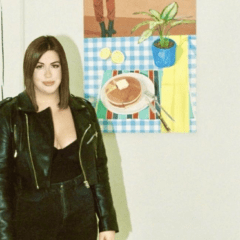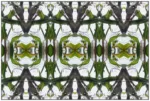[Chip draws parallels between David Lynch and a ghostly show of photograms, which he saw while visiting Los Angeles. — the Artblog editors]
“No hay banda! There is no band.” Amid the rippled, red “curtains” slung across the rear of Von Lintel Gallery, we find ourselves as the audience for a performance devoid of motion and sound, yet the voice from David Lynch’s “Mulholland Drive” cuts through loud and clear. “This is all…a tape recording,” says the host from Club Silencio; or rather a “treacherous image,” as the case may be.
Silent music
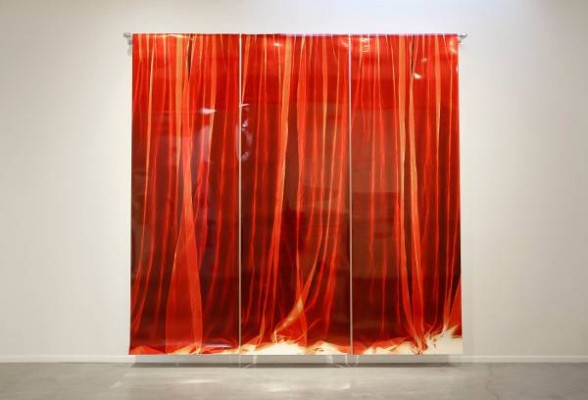
Artist Farrah Karapetian’s first solo show at the Los Angeles gallery is all but an illusion. Karapetian is someone who works primarily in sometimes representational photograms, and this particular exhibition is inhabited by images hailing from the vocabulary of music and theater. These staged, temporal art forms are very distinct disciplines in their own right, and ones that would not appear to translate well to still images, especially those dependent on long exposures.
In Stagecraft, we encounter life-size drums, horns, and microphones, and yet, not only are they silent, they are not there at all. By capturing these phantoms with the help of camera-less photographic stills, Karapetian carefully directs a show that maintains itself only through the power of suggestion. This parallel with music’s innate ability to communicate through abstract patterns, and drama’s capacity to weave complex scenarios from speech and gesture, only becomes more apparent as I spend more time with these fixed replicas.
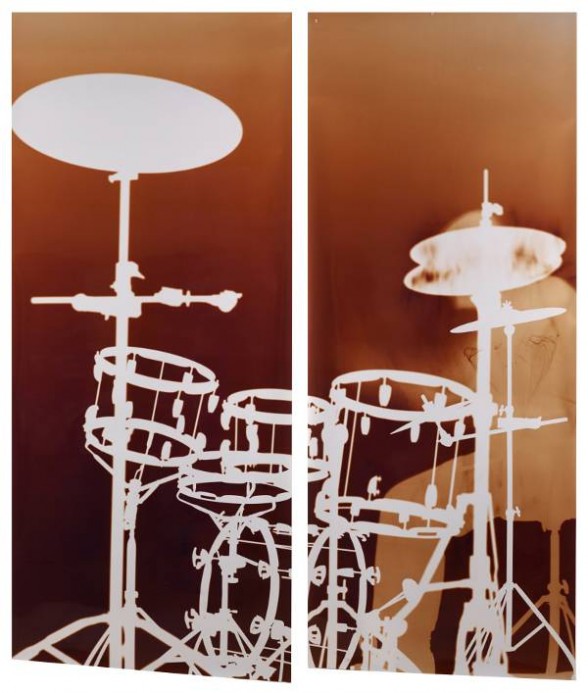
Initially, the reverse silhouettes seem straightforward. Each image is layered and bright, with the whitish instruments and occasional musicians contrasted against a murky background of negative space. There are images of cymbals tilted above the toms of a drum kit submerged in an amber glow; the tall yellow portrait of a guitar resting upright; and an orange saxophone bleeding through a darkness that threatens to overtake it and the entire frame.
Growing curiosity
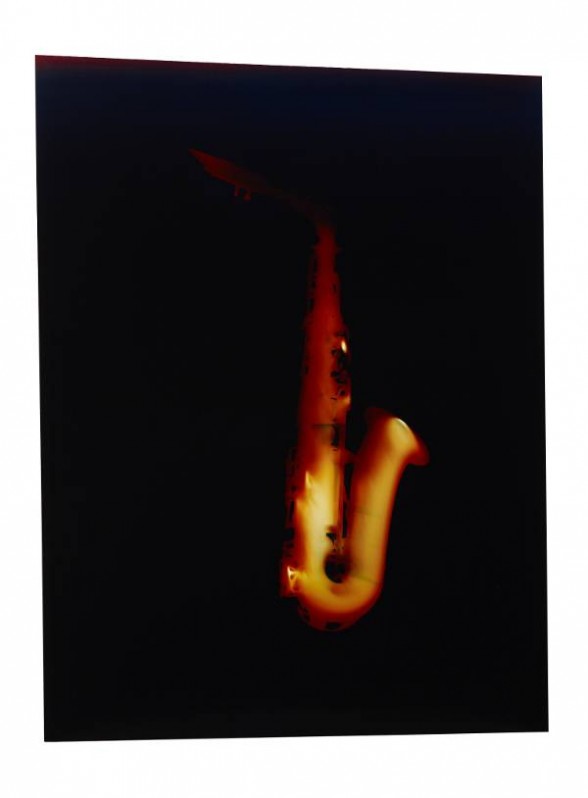
But what of some of the details here? How could Karapetian capture the texture of brass cymbals and all of the lugs and tension rods of the opaque drums with this process dependent on light and transparency? Orchestration, of course–and not of the musical notation variety.
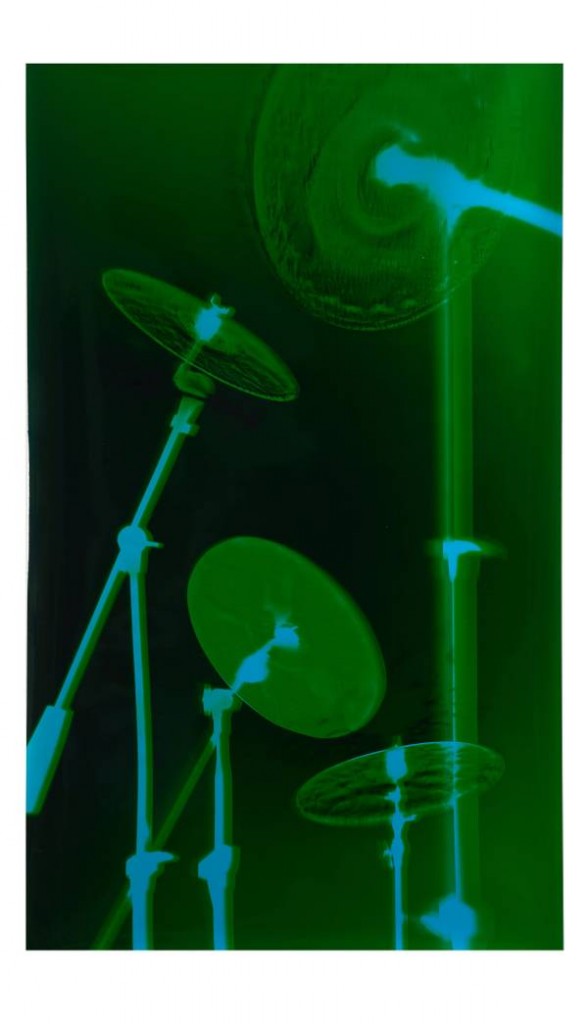
Karapetian’s unusual orchestration
In a side room, we find a fully assembled drum kit bathed in white light. Entitled “In the Wake of Sound; In the Break of Sound,” this instrument is not what it first appears to be. Incapable of being played like an actual drum kit, this setup is really just an elaborate prop used by Karapetian to produce her photograms, or a Dadaist romp to recall Man Ray’s “rayograms”.
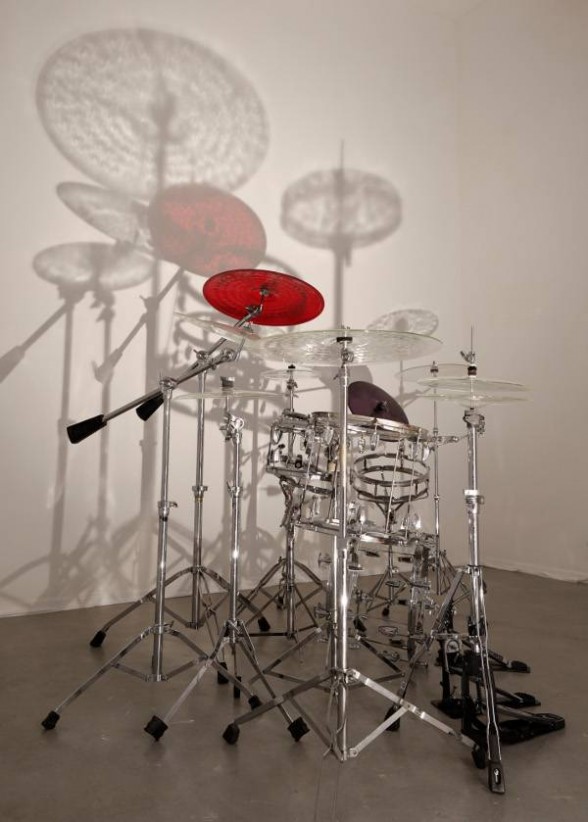
The drums themselves are merely skeletons, hollow outlines of hardware without their wooden shells or heads. As for the cymbals, they are fabricated from glass. Although not particularly conducive to striking with a stick, these see-through cymbals are perfect for exposing in front of light-sensitive chromogenic sheets. This chemical process ultimately recreates each non-instrument in such a way that its two-dimensional shape is instantly recognizable as the thing itself, despite the fact that many of them are more model than machine.
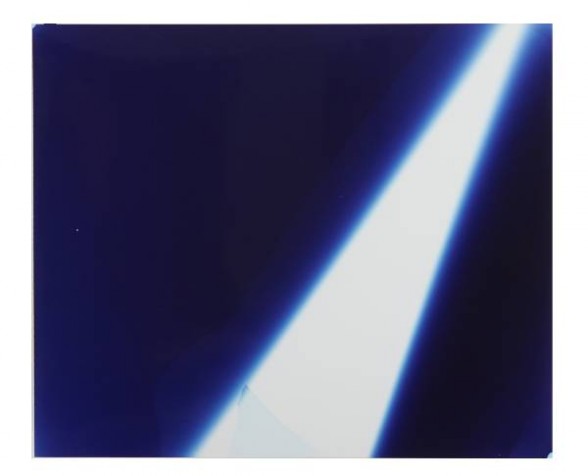
As if shedding light on both the process and static performance at play here, Karapetian also includes a series of three images whose subject is the spotlight. This focused beam of light, used on stages to draw audience attention and illuminate specific parts of the action, is precisely what the artist’s misdirection is all about. By carefully staging scenes ahead of and during exposure of the photograms, Karapetian provides the minimum amount of information necessary for her viewers to see–and possibly hear–a band. Add to this a little suspension of disbelief, and the result is a directorial montage not quite live-action theater and not quite film.
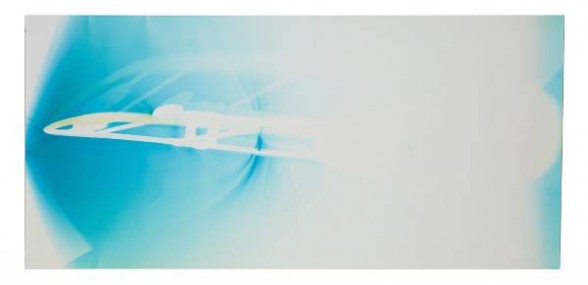
One of the most purely abstract images here is a quietly dissolving trombone lost in an icy haze of immateriality. In “Blow Cold,” we find the horn almost completely obscured by a heavily exposed swath of white that nearly washes out the curve of its bell. This disappearing act manages to anchor us somewhere outside the farce and lets us peer in from afar, perhaps seeing these images for what they are, as opposed to what they represent.
From this almost voyeuristic standpoint, we naturally turn back to Lynch. In the world of “Mulholland Drive,” we attend a concert with no musicians, and our notions of authenticity come under assault. Farrah Karapetian’s Stagecraft is little more than a trick of light and chemistry, but in a way, so is everything we see.
Stagecraft will be on display through Feb. 28. Von Lintel Gallery is located at 2685 S. La Cienega Blvd, Los Angeles, CA; gallery@vonlintel.com.




